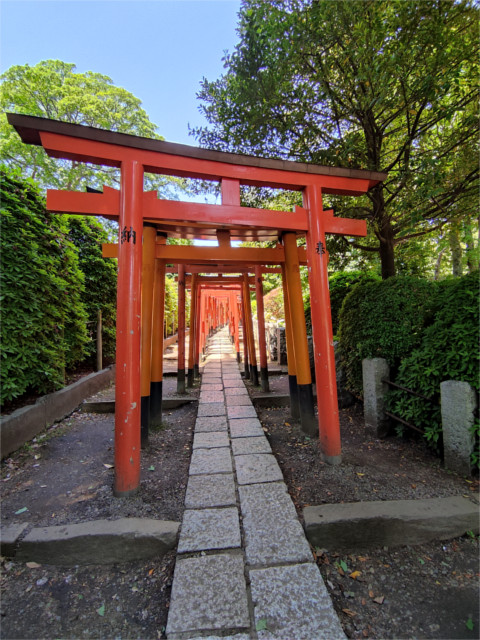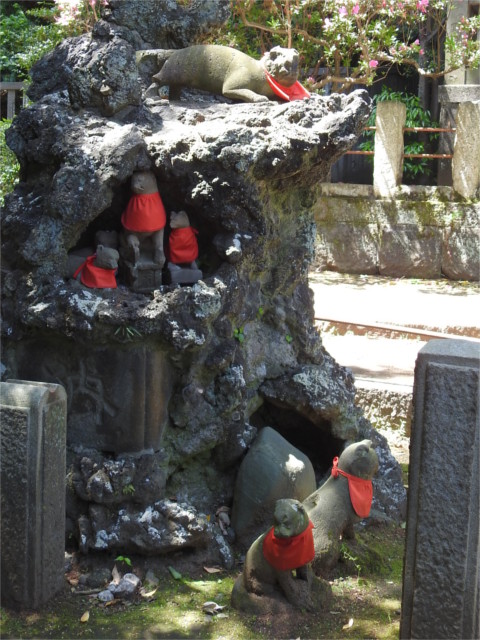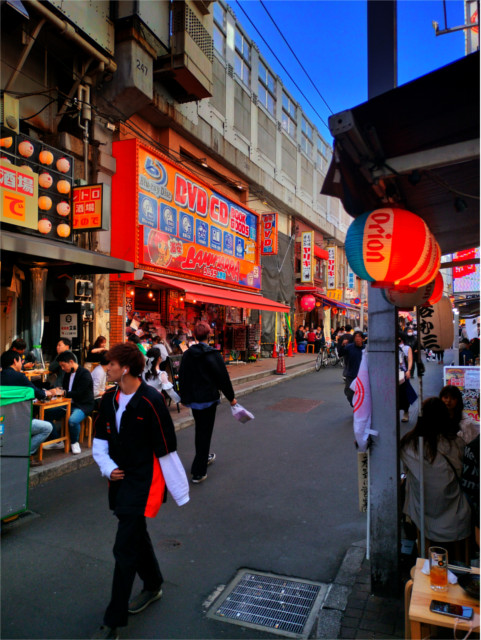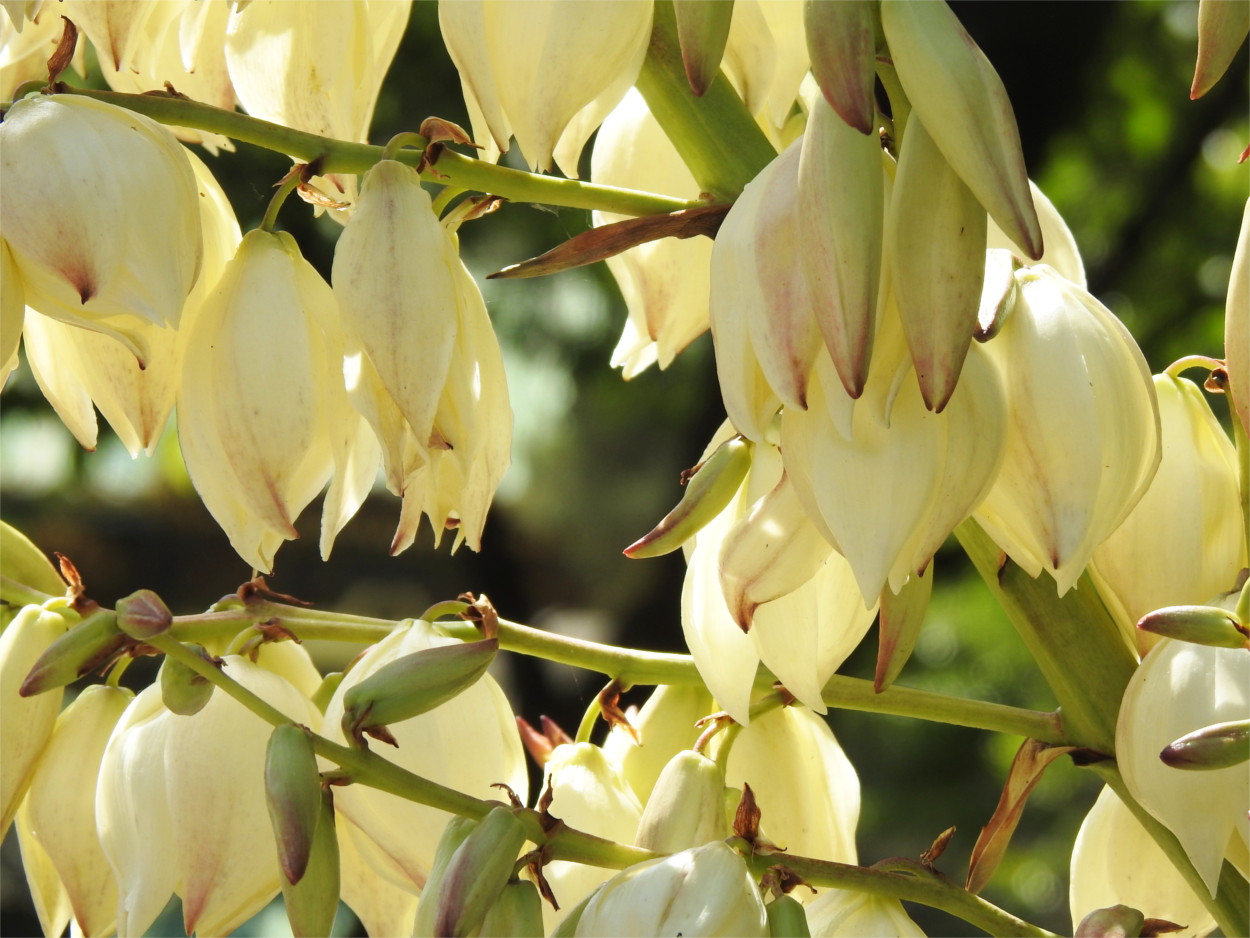Arriving in Tokyo when masses of azaleas had begun to wither on bushes, we were free to look for other flowers in bloom. Early May is the peak of the flowering season, so we didn’t have to look hard. The walk to the Toshogu shrine inside Ueno Park is lined with low trees almost hidden by hanging white flowers. These Japanese andromeda (Pieris japonica) begin to flower in March and reach their peak flowering at the end of the season in May. The genus Pieris belongs to the family Ericaceae. Unlike the edible members of the family, cranberry and blueberry for example, plants in this genus are full of phytochemicals which are not exactly friendly to us. Knowing that one has to avoid eating all Andromeda is easy. So much easier than to learn the ways of their more complex cousins, the Rhododendron, some of which are edible and others poisonous.
Tag: Taito ward
Modernism in Ueno Park
Kunio Maekawa graduated from Tokyo University in 1928 and left for Paris to study with Le Corbusier for two years. When he returned to Japan he continued to work in the modernist tradition, which was at odds with the style then fashionable. He became an important figure in post-war Japanese modernism. When Le Corbusier was invited to design the National Museum of Western Art in Ueno Park (see the gallery below), he insisted that Maekawa draft the plans. Le Corbusier’s building was completed in 1958. Three years later, across the road from it Kunio Maekawa’s concert hall, the Tokyo Bunka Kaikan was inaugurated.




Le Corbusier’s design for the NMWA of a concrete brick floating atop pillars looks more brutalist than his similar, and nearly contemporary design of the Sanskara Kendra Museum in Ahmedabad executed in brick. We had not planned to spend time inside the museum, so we walked around it, looked at the familiar tropes that Le Corbusier had utilized during this period. I ducked briefly into the foyer to look at the light. It was exactly what I expected: some outside light streamed into the lobby, but the interior was shielded in order to have the uniform lighting that a gallery needs.




We crossed the road to take a closer look at Maekawa’s design of an opera house. I hadn’t seen anything else by him, but this particular building is said to be a turning point for him. The foyer with its interesting mosaic floor, gold tiles, and deep colours had a different feel from Le Corbusier’s austere foyer across the road. The building was still clearly modernist, echoing the bare concrete of the museum in its exterior, but there was clearly a more playful approach to the space inside. Even the contoured exterior door handles turned away from the severity of the earlier forms. The colours and the shapes hinted at the turn architecture would take in the next century. I think I’ll have to look for other buildings made by Kunio Maekawa; I find him prophetic and interesting.
Nezu shrine
The Nezu shrine was not at the top of our list. It is said to have been founded in Sendagi, one train station to the north of its present location, and rebuilt by Ota Donkan in the 15th century CE. The fifth Tokugawa shogun moved it to its present location in 1705. His successor, Tokugawa Ienobu, chose it as his guardian shrine. Later, the Meiji emperor worshipped here. Since it remained untouched in the 1923 Kanto earthquake and the fire-bombing of Tokyo in 1945, it is now one of the oldest shrines in the city. Still, we would have dropped it from our itinerary if we hadn’t read about the Tsutsuji matsuri, the Azalea festival which takes place there in the last week of March. So the first thing we did on our first morning in Tokyo was to go there. The azalea festival was petering out; the flowers had begun to wilt; but we were happy to see Nezu Jinja.




You know when you have arrived at the shrine because of the torii with lanterns which leads off the approach lane into the grounds. If you can read kanji, then carved characters on the stone monolith next to the shrine will tell you where you are. The path curves around a tall tree and leads you across a bridge over a carp pond to the big two-storied gate, the romon. The photo in the gallery shows the main hall, the hondo, as seen through the romon. We didn’t enter the hondo. It is said to be a smaller copy of Nikko Toshogu, and we’d been there the previous day. Instead we walked out by the Karamon gate at one side which pierces the latticed wall called the sukibei.


From here a path led uphill. On one side, we could visit the secondary Otomi Inari shrine. Inari is the name of fox god in the Shinto belief system, and he is associated with rice. He could be the most popular kami, god, in Japan, with over 30,000 Inari shrines across the country. Buddhism also adopted these shrines, which can be identified by the vermilion torii which lead to them. In the most interesting shrines, these torii become a tunnel, which I imagine is some kind of a foxhole.


We could have turned into the gate which led to the azalea garden, but The Family said “They are mostly gone. Let’s see what’s on the other side. So we took the fork lined with vermilion torii forming a long and winding tunnel. We walked through it, took a couple of selfies, and emerged on the other side, where two statues of guardian foxes flank the path. Next to the path was a white shrine with red laquered woodwork. Clearly this must have been the Inari shrine. The path continued beyond.


Beyond this we entered a shaded area under trees. A first space was called the Enzuka, and is said to contain the placenta of Tokugawa Ienobu. I was surprised to see reliefs of gods with multiple arms. They did not seem to correspond to any of the Buddhist or Hindu gods that I knew. I guess multi-armed images may represent anyone who is considered powerful. Perhaps this relates to the shogun, but it will be nice to find out for sure. Beyond this is was a space guarded by many statues of foxes.


This is the space called Bungo no ishii, the Stone of the Literary Masters. I was surprised to find that one of the Japanese books I’d read, I am a Cat, is connected to this place through its writer Natsume Soseki, one of the Literary Masters who were inspired by this place. Amusingly, he has been turned into an anime character who wears a bowler hat, and sometimes takes on the shape of a cat. I looked at the light filtering through Japanese maples here. “I could find inspiration here”, I told The Family.
Under the Yamanote line
Ameyoko became famous as a post-war black market after WWII during the occupation. Seventy five years later, it has morphed into a place where locals and tourists go for bargains during the day, and food at night. As we walked from Ueno park to the metro station we saw a lively road leading off under the Yamanote line overpass. Across the world colourful districts under railway or road bridges can become exciting places, so we went down this rabbit hole.


Already, in the early afternoon, the atmosphere had begun to turn boisterous. Some of the shops were still open. I could see shops selling DVDs and CDs (old technologies do not seem to die in Japan) and sex toys. The famous sweet shops which give the locality its name were beginning to shut down (no quarter given for Children’s Day, which was two days away) and it was definitely too late for the fresh food stores. We’d missed our chance to haggle about prices using our translation app, and we’d had lunch too late to sit down at one of the food stalls.


It was a good time to walk around and take photos. At three in the afternoon, the light was still too bright to yield atmospheric and moody photos. So after being busy with my phone, I had to spend some time with the editor to bring you these photos of Ameya Yokocho in the witching hour. If the day had not tired us out, we would have made our way here earlier to look at some of the shops. That’s a bit of Japan left for the future.



